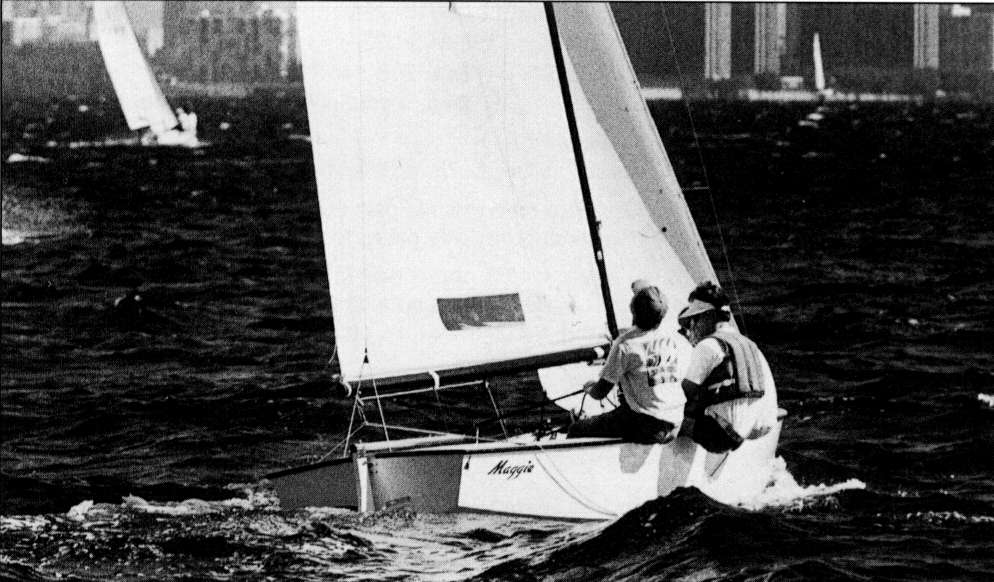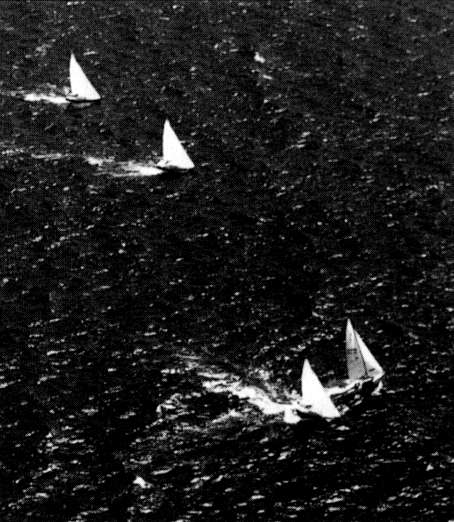
Go the Right Direction!
by David Dellenbaugh
Left or right? That may be one of the most commonly asked questions before the start of any sailboat race. And the way each crew answers this question often makes the difference between finishing near the front of the fleet or at the back.
Good speed is absolutely critical in almost every race. That’s because even if you have the best tactics and strategy in the world, you will be left in the dust if you’re not going fast.
On the other hand, good speed is not a guarantee of success. In fact, if you are headed toward the wrong side of the course, going fast may actually be a handicap. That’s why, no matter how fast you are, you must consider whether you want to go left or right.
In sailboat racing, strategy is the plan you make for getting to the next mark as quickly as possible in the absence of any other boats. It is the course of action that you’d choose if you were sailing around the race course against only the clock.
Your strategy is a plan for how you will take best advantage of the conditions on the race course. It should take into account things like wind direction, wind strength, current, waves and the position of the next mark. All these factors are different every time you go out on the water. They change constantly while you are racing and often vary across the course. As a result, the difference between going left and going right can be huge.
Strategic elements
While racing there are four strategic factors that are usually very important on the first beat: wind direction, wind velocity, current and the geometry of the course. The existence or absence of waves is another factor you should consider, but this does not often make a big difference.
Before you can actually plan a strategy, you must observe the race course and collect a bunch of helpful information. You can (and should) actually begin gathering data about wind and current before you leave the dock. Use weather forecasts and current charts, and tap into the local knowledge of other sailors. Then get out to the course area early and start looking around.
 |
After the race starts, don’t stop thinking about strategy. The wind and current are still changing, and now you have many other boats to help you see which side of the course is really favored.
Formulating a strategy
Once you have collected a bunch of observations about the wind, current and course, you’re ready to start putting together a strategy for the first beat. This should be a plan, or blueprint, to help you sail as quickly as possible from the start to the windward mark.
Your strategic plan could be as simple as, “Hit the left side hard.” Or it might be more detailed, like “Start 1/3 of the way down from the RC boat and play the oscillating shifts up the middle right side.”
 |
| On the first beat, you must work hard to take advantage of changes in both wind direction and wind velocity. In this photo, the boat on the left apears to have a header. If she was sailing in a lull, this change in heading might be due to a “velocity header.” In that case, she wouldn’t want to tack.
|
Whatever helps you is what you should use. Don’t forget to keep re-thinking your strategy during the race since you will constantly get more information about the wind and other strategic factors. One more thing is to make sure you think ahead. For example, you should always develop a gameplan before you start the race; don’t wait until you’re part way up the beat to start thinking about it.
When you don’t have a clue
 |
| The best way to plan your strategy would be to view the race course from overhead. Since that is not possible while racing, you must work hard to keep your head “out of the boat” and focus on the big picture. |
There will be times, of course, when you’ll have no idea whether to go left or right. In fact, even the best sailors don’t have a strong feeling about which way to go on the first beat in as many as 50% of the races they sail. When this happens, what should you do?
Unless you’re sure the right or left side is favored, don’t go there. Stay near the middle of the fleet and keep your eyes open. The beginning of the first beat is a great time for seeing what the wind is doing and which side is paying off.
Once you get some clues about which boats are gaining, head that way quickly. Of course, you will probably come out behind the boats that sailed straight for this favored side. But you took much less of a risk than they did, and hopefully you will still be in the top group at the first mark. If you can do this every race, you’ll be successful.
Dave is a two-time America’s Cup veteran who publishes the newsletter Speed & Smarts. For a subscription call: 800-356-2200.